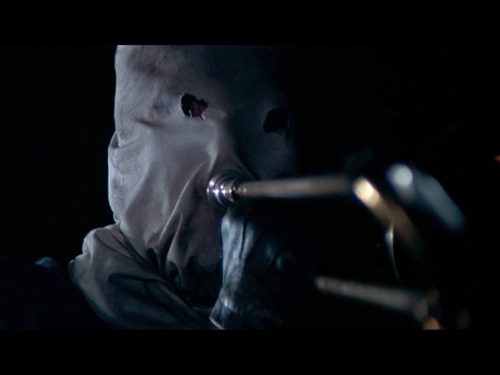The hyper-violent, dual-gendered fantasy horror film is an impassioned but over-simplified examination of gender roles and alternative sexualities
Before we dive too deep on this one, a warning: major spoilers ahead. High Tension is the kind of film one can’t even begin to dissect until the twist has been fully revealed and subsequently picked apart with a fine-tooth comb. It functions, much like The Sixth Sense before it, as a completely different film upon a second viewing: one that requires careful analysis to fully understand if the twist (1) works logistically, (2) works thematically and (3) respects its characters or the communities they represent.
In the way that The Sixth Sense becomes a meditation on loneliness and our society’s lack of human connection, High Tension becomes an impassioned but over-simplified examination of gender roles and alternative sexualities.
October Horror Day 2: George Romero’s Martin by Bennett Glace
So here’s that big twist: our apparent protagonist, Marie (Cécile de France), who has been hunting down the murderer who kidnapped her best friend Alex (Maïwenn) for the film’s first two acts, turns out to be the killer herself. The entire time we have watched her battle a hulking, mysterious man, she has been committing the heinous crimes she ostensibly witnessed while fantasizing that she was both a heroic final girl AND a menacingly masculine slasher.

This dual-gendered fantasy twist used to inspire my enthusiastic repeat viewings of the film, but I’ve found it increasingly concerning in today’s cultural climate, particularly considering the growing proliferation of the misguided “crazy lesbian” or “crazy transgender” character tropes in genre cinema.
We learn early on that Marie has been harboring romantic interest in Alex for awhile. The film doesn’t hide her orientation in any particularly obtuse or shameful way, but until the big twist, it appears to be a simple case of unrequited love.
We see a conversation in which Marie jealously critiques Alex’s promiscuous sex life with men while Alex waxes on about her lovers and her appreciation of the male body. Irritated by the conversation, Marie goes outside for a cigarette and witnesses Alex in the shower through an upstairs window. In this moment, something shifts. She suddenly disappears from her smoking perch and we next see her in her room, putting on headphones and proceeding to masturbate. I should note, she is listening to a song that repeats the lyric “Just another girl, that’s what you are,” reminding her of her perceived lack because she can’t be the gender Alex desires. Once she begins to masturbate, the serial killer arrives. On first viewing, this moment only functions to show that Marie is distracted and can’t hear the killer right away. On a second viewing, this becomes the lynchpin in the reality shift: Marie’s masturbatory fantasy come to life.
While a moment like this can be rewarding and revealing in a second viewing, it also kickstarts the inconsistent depiction of either a disgruntled lesbian character or a transgender character who hasn’t yet realized their desire to be male. To further complicate this contradiction of Marie’s fantasies, when we first meet the serial killer Marie has envisioned herself as, he is in the midst of exclusively male action — receiving a blow job from a severed head. It may go without saying at this stage, but the violence and depravity in this film is extreme. So extreme, in fact, that Marie’s serial killer creation seems almost superhuman in his strength and viciousness. When he arrives at Alex’s home to kill her family and kidnap her, he manages feats of evil that are certainly beyond what any man (let alone a woman of Marie’s stature) could manage. The fantasy reveals itself as a heightened reality even in these early scenes.
Maybe this dilemma of sexuality and gender is intentional by director Alexandre Aja, but in context, it feels more likely that he has lumped together various versions of female-desiring orientations in service of his “big twist,” leaving both parties inadequately and unfairly represented.

Regardless of Aja’s intentions, this is not the kind of film that would be made today. What the film attempts to say about gender today feels at best, unfocused and, at worst, irresponsible. As one of the best-known entries in the New French Extremity movement, the film may have indeed been more interested in a shocking dramatic reveal and the gruesome violence that leads us to said reveal. Though my personal relationship to the film has changed with growing empathy toward the increasing attacks on alternative genders and sexualities, I still appreciate High Tension as an artifact of a brazen, memorable time in cinema where rules don’t apply and the most daring, surprising films rise to the top. Under such a specific interpretation of the film’s intentions, High Tension remains an unforgettable and provocative piece of New French Extremity cinema.
Find the complete October Horror Archive here:

Stream High Tension here
Follow our list of the 31 Days of October Horror on Letterboxd
(Split Tooth may earn a commission from purchases made through affiliate links on our site.)




